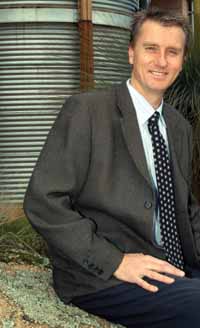 The Dean of the Faculty of Science at Charles Sturt University (CSU), Professor Nick Klomp, today released a report that reinforces the critical role of CSU in tackling the rural and regional health crisis.
The Dean of the Faculty of Science at Charles Sturt University (CSU), Professor Nick Klomp, today released a report that reinforces the critical role of CSU in tackling the rural and regional health crisis.The Graduate Destinations Report – Selected Major Health and Human Services Disciplines found that almost 70 per cent of CSU’s on-campus health and human services students are originally from a rural and regional area (based on data for 2007 to 2009), and the great majority of them take up employment in rural and regional areas after graduating.
“The fact is that without Charles Sturt University, many towns and communities in rural and regional Australia would not have access to health and human service professionals, and therefore essential health services,” Professor Klomp said.
“These results reinforce national and international studies that have found that the only proven method to significantly increase the number of health professionals practising in rural and regional areas is by educating rural students in rural locations.”
The Graduate Destinations Report shows that of CSU’s on-campus health and human services students from a rural and regional area, 74.4 per cent of students who were originally from an inner regional area took up employment in a rural or regional area; 75 per cent of outer regional origin students took up employment in a rural or regional area; 88.9 per cent of remote students; and, 71.4 per cent of very remote students. A total of 42.9 per cent of metropolitan origin graduates in the health and human services also took up employment in a rural or regional area.
The courses that retained the highest proportion of rural and regional students in a rural and regional area were: psychology (91.7 per cent); nutrition and dietetics (90.5 per cent); podiatry (88.9 per cent); nuclear medicine technology (85.7 per cent); pharmacy (83.1 per cent); and social work (80 per cent).
“Charles Sturt University’s mission is to deliver higher education that meets the needs and aspirations of rural and regional communities,” Professor Klomp said. “By delivering a broad range of health and human services courses in regional Australia, we provide rural young people with reasons to stay locally to study and to return to rural professional practice.
“The findings reinforce the importance of Charles Sturt University’s proposal to establish a new medical program for rural young people in rural NSW.
“The Federal Government’s National Health Workforce Taskforce (NHWT) tells us there is now a shortage of approximately 6 300 medical practitioners across the country and that Australia needs 356 more medical students every year to meet current and future demand. In rural Australia, there is a current shortfall of 1 800 rural doctors.
“If we want rural young people to stay in rural Australia, we must provide the same range of educational opportunities that have been given to metropolitan young people by the Government. This is not only essential for retaining young people in rural areas, but for rebuilding our professional health workforce.





Social
Explore the world of social